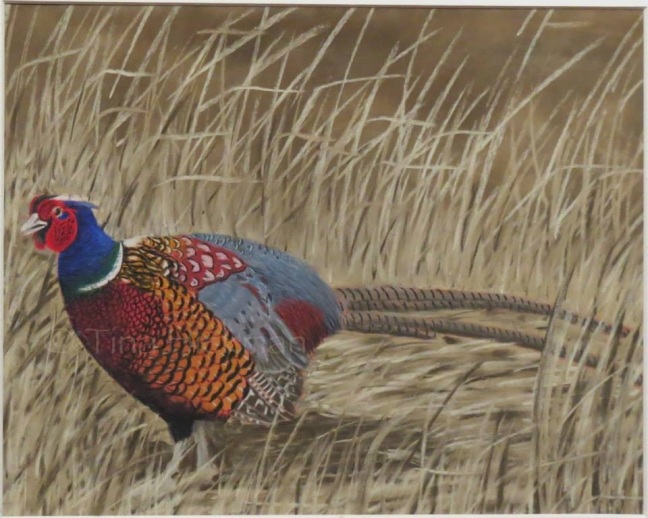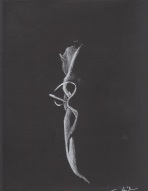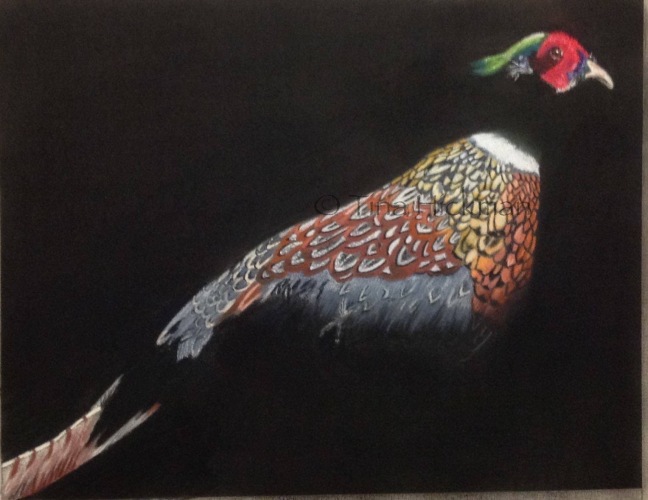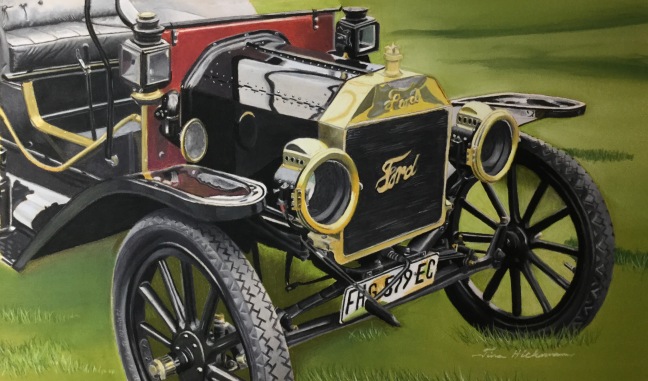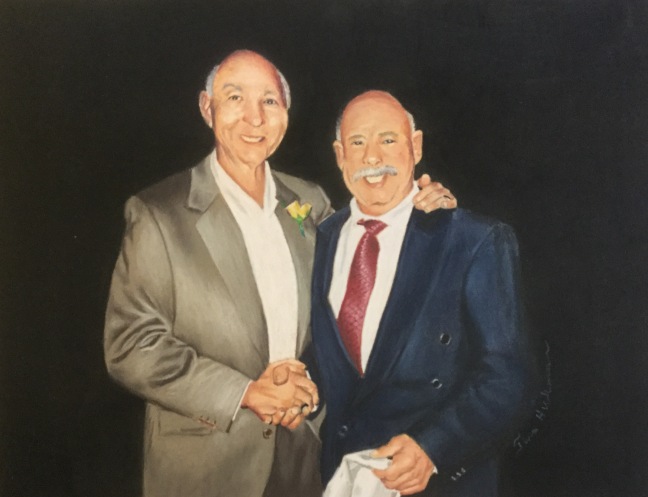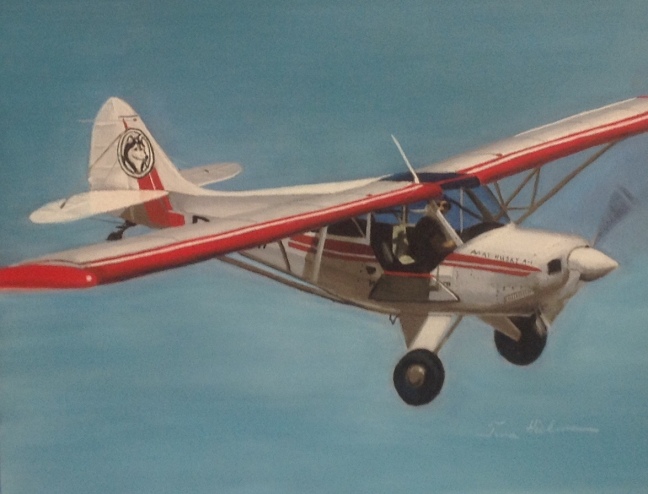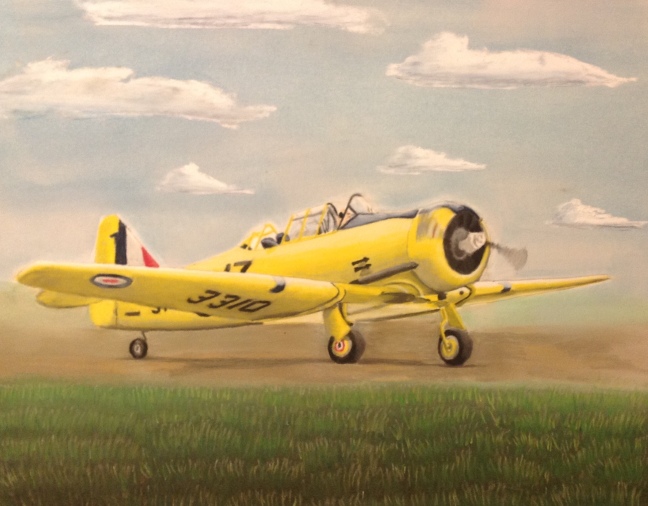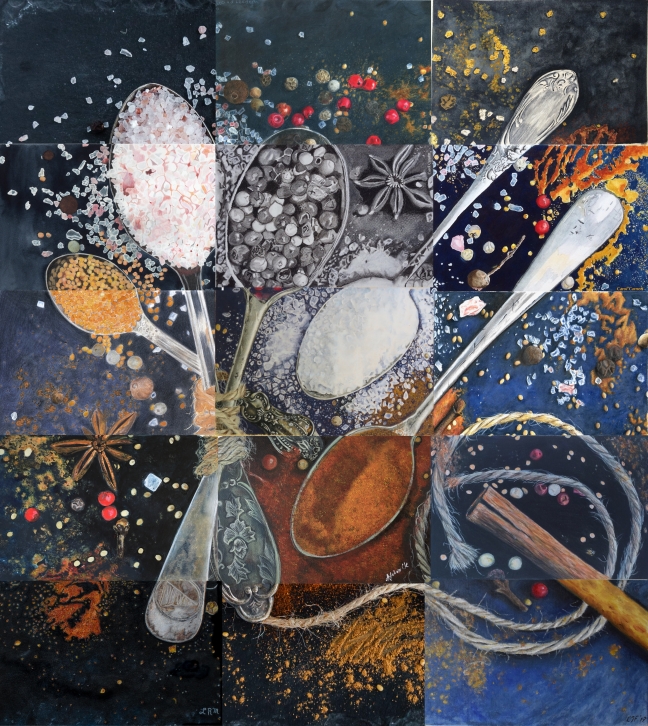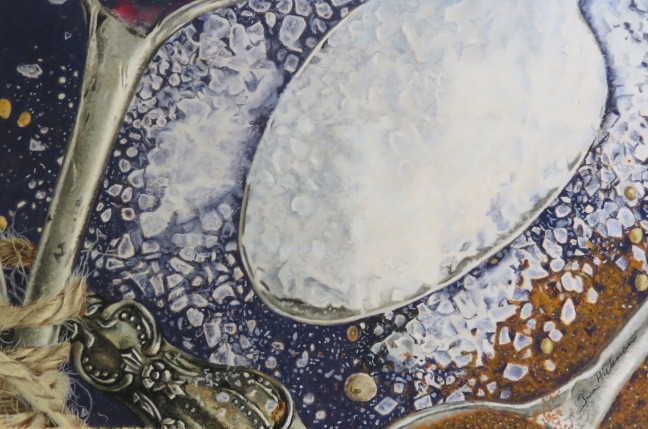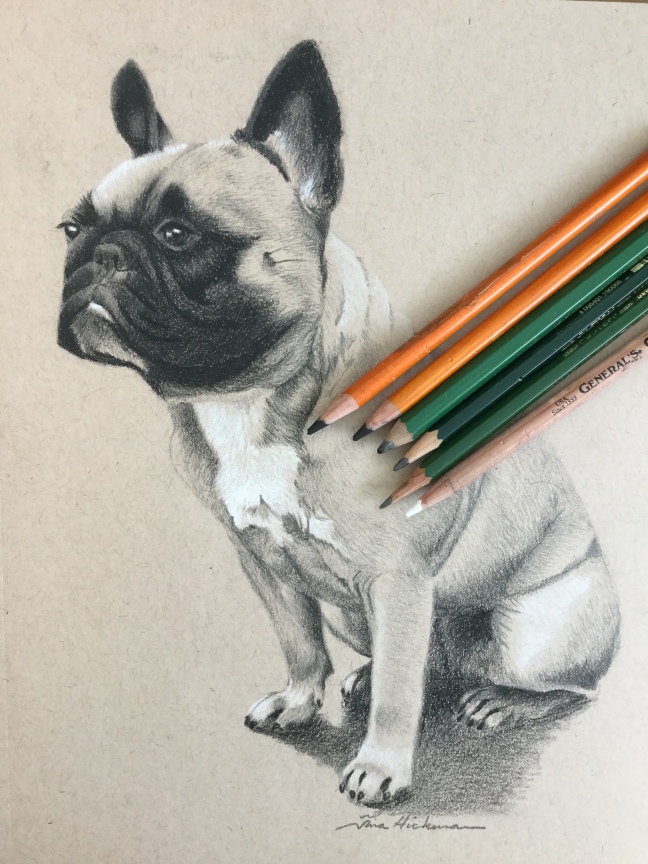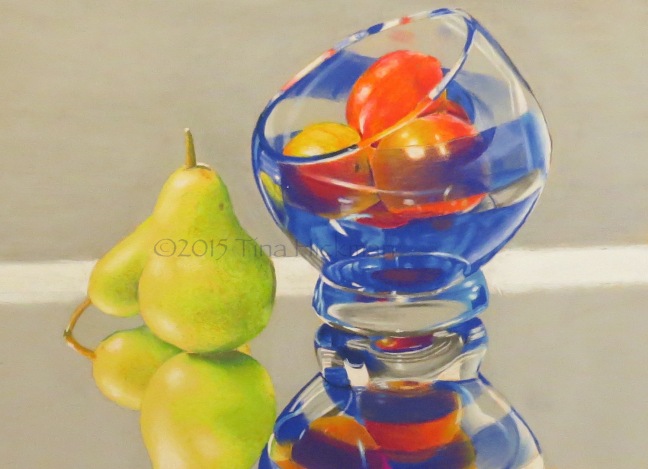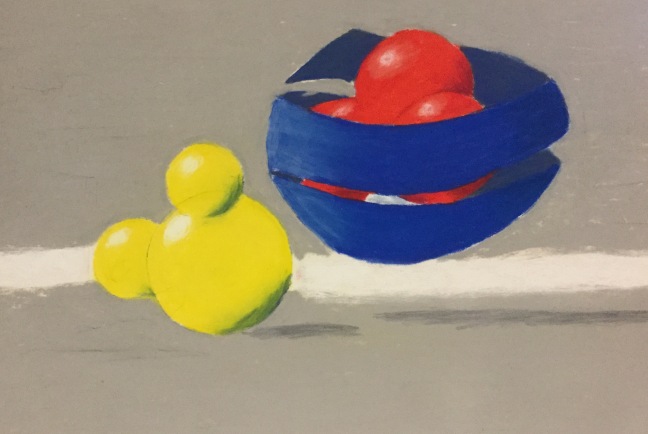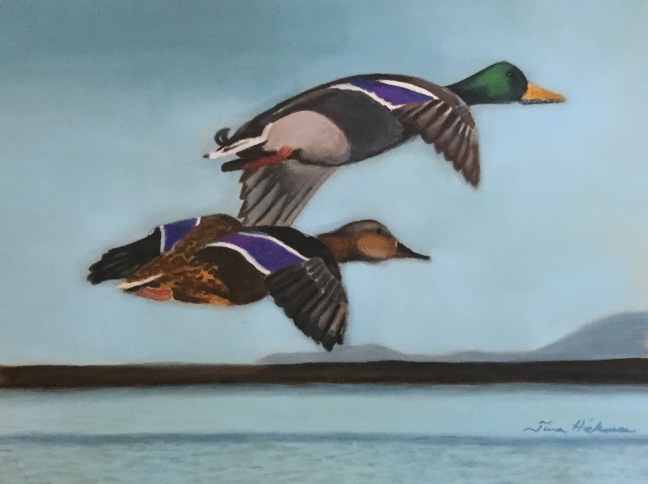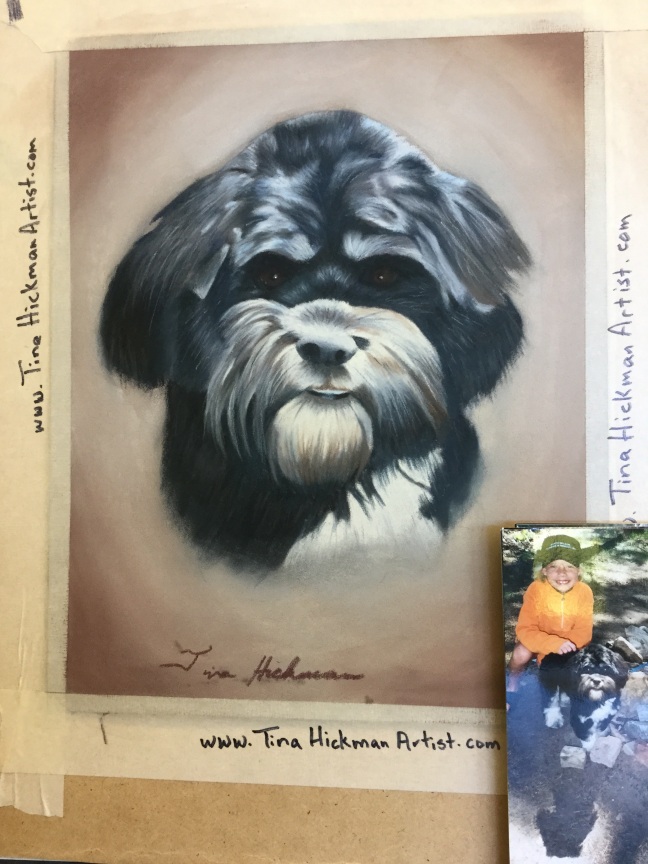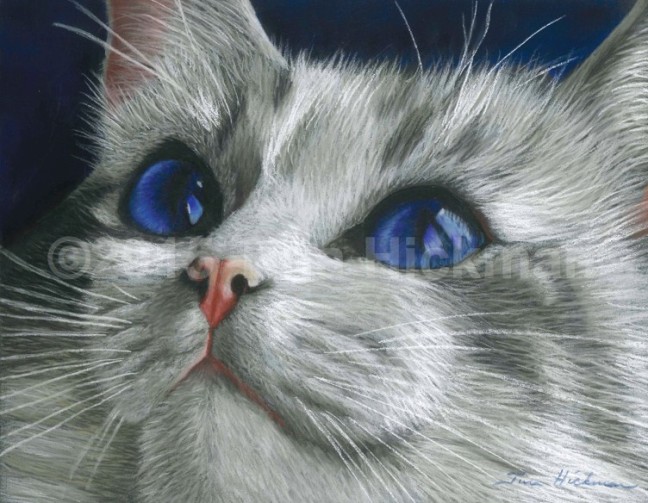I originally started this piece as a submission for the duck stamp contest for the State of Wisconsin. I had submitted pieces for the pheasant stamp contest and took fifth place in 2014 and second place in 2015. Wisconsin has stamp design contests for turkey, pheasant, and waterfowl. In an ideal world I would like to submit pieces for all the contests, but unfortunately that does not happen. Since ducks seem easier to draw than pheasants I thought I would give the ducks a try.
In one of the Facebook groups which provides copyright free reference photos for artists, I found the perfect photo of a pair of mallards winging their way over a large lake. I laid out my line drawing on a piece of Pastelmat as I always do, anticipating that I would do the piece in pastels as I always have. Somewhere along the way, I decided that I would take this opportunity to try out new the watercolor pencils that I had not yet really used.
Remember, I’ve never used watercolor pencils. I have seen tutorials, and I have been told several ways that one might use watercolor pencils. I even own a complete set of watercolor pencils. However I am often afraid to use a new type of paper or medium for the first time. Usually when I pick up my pencils, I intend to do a complete piece, not a practice piece, nor a practice subject. So what possessed me to try to do a contest piece in a new medium on the wrong kind of paper? Pastelmat is great for pastels, but it’s not really designed with watercolors in mind. Hence the name.
There are several ways that you can use watercolor pencils. First off, you can use them just like colored pencils. Why this would sound like a good idea to me, I have no idea, since I am frustrated by colored pencils and have never mastered them. The problem I have with colored pencils is that I do not get complete coverage, and a lot of white paper shows through. This results in muted colors and an unfinished look. I have seen other artists use colored pencils very successfully to turn out photorealistic drawings. They do not seem to have the problems listed above. I know they spend an astronomical amount of time building of layers and blending everything together. I have made modest attempts to do this but have never turned out a drawing that I was at all happy with using colored pencils.
Watercolor pencils can also be used the same way as watercolor paint. One can make masses of color on the paper, like a sort of pallette, and pick up that color with a wet paint brush just like you might a tray of watercolor paint (you can do the same with just the pencils themselves, use a wet brush to pull the pigment directly from the pencil lead). Just like regular watercolor paints, this gives a translucent thin layer of color. This also is a silly idea for me, because I have not used watercolor paints in 30 years, and I had a limited mastery of it back then. And it doesn’t give the kind of look that I prefer in my work.
So the previous two methods are ways to try to force the watercolor pencil to act like more traditional media. Or, if you prefer, you can consider those to be ways that contribute to the versatility and diversity of the medium. But there are other ways to use them, too. Really there is no wrong way to use art supplies, but some ways are better than others for achieving the effect that you wish to achieve.
My brilliant idea was to dip the pencils in water and draw with the wet leads in order to achieve the kind of color saturation that I was used to. Of course, the leads are water-soluble, so they start to melt a little bit when they get wet. This means that you cannot get a sharp point on your pencil, at least not while it is wet. Not having a sharp pencil tip means that I cannot get the level of detail to which I have become accustomed. Although I should’ve been able to layer more pencil over what I had already done, the base layer ended up so thick that the new pencil did not want to stick on the base layer. In the end, I did finish the painting. I tried to apply the base layer of the hen’s body in a traditional watercolor painting way, but the paper did not afford me the kind of control that I wanted. It ended up leaking outside the boundaries of the duck. I used pastels for the background.
I learned a lot. I was reminded to choose the right kind of paper for the medium in question. I learned that the first time in a new medium may not be my own best work. I learned a way to not use watercolor pencils. I also learned that I very much do not like drawing Mallard hens. It was a good learning experience and a meaningful foundation for future watercolor pencil work. I am still curious about the medium, and still interested in learning how to use watercolor pencils effectively.
But for this first experiment in watercolor pencils I was just “winging it”.
